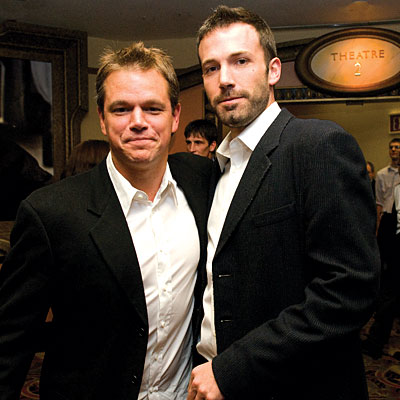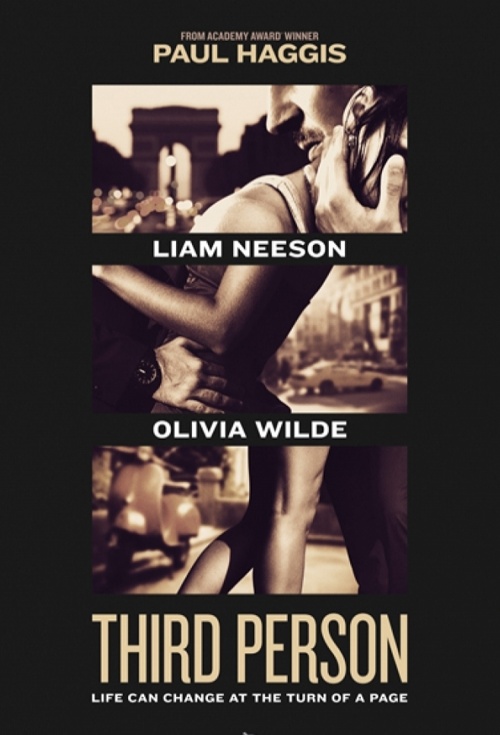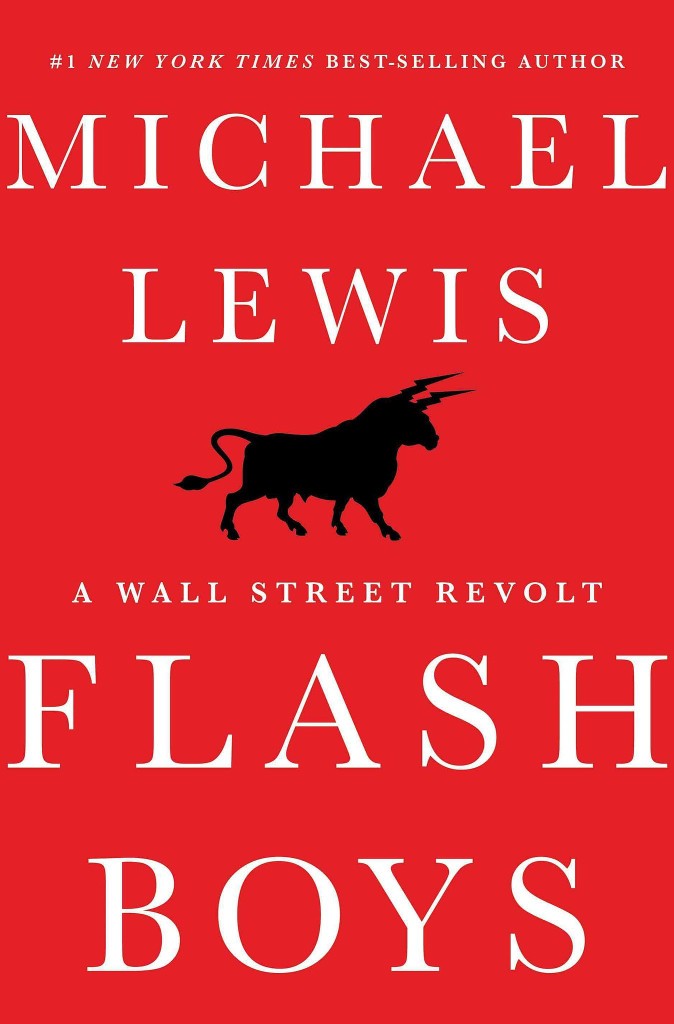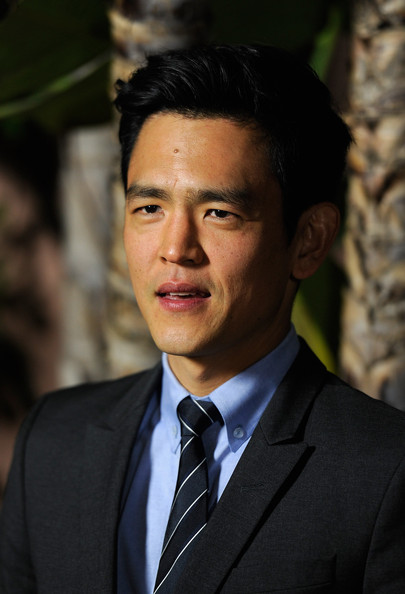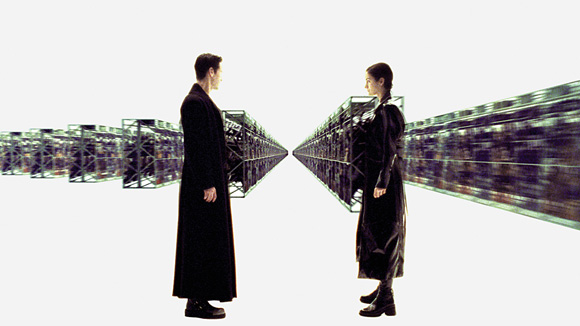Search Results for: the wall
Matt Damon and Ben Affleck came onto the scene in a unique way. They weren’t the typical “new kid on the block” pretty-boy actors when their surprise hit, Good Will Hunting, took Hollywood by storm. They also WROTE their script. And they didn’t just write it. They LABORED over it. For years. And in the end, all that laboring paid off as they won a screenwriting Oscar and became perennial movie stars in the film industry.
A few years later, they wanted to give back to the screenwriting community. So they developed a cutting edge project called Project Greenlight, which would try to find the next great script and make a film out of it. I remember this time well. It was the first time screenplays were submitted solely through the internet, which was a big deal. It felt like screenwriting was entering a new phase of its existence, the ‘digital’ realm. And it was symbolic. The contest was saying, “The old rules of Hollywood are dead.”
Not everything went smoothly though. Their reading process was controversial (writers submitting to the contest would also become the contest’s readers) but the contest blew up anyway. For the first time in screenwriting contest history, instead of winners getting a chunk of money and a pat on the back, Project Greenlight gave you direct access to two of the hottest names in Hollywood. Who were going to make your movie! It genuinely felt like you could become an overnight star. Which, as you know, is as rare in the screenwriting community as a genius Scriptshadow rating.
But the really cool thing? Was that these guys CARED about screenwriting. They had screenwriting’s back. What a lot of people forget is that the reason Matt and Ben started this whole contest was to prove that the Hollywood system was broke. They wanted to show that all these glossy pieces of crap Hollywood was pushing on audiences couldn’t compete with an honest-to-goodness great screenplay, something they were prepared to scour the world for.
Unfortunately, Project Greenlight didn’t go as planned. It did not result in any successful, or even particularly good, movies. Why that happened is up for debate. Was it smart to make the winning writer also a first-time director in the first season? Did the movies ever have a chance with such tiny budgets? Is it wise to make a movie about kids (11 years old in the first movie, 15 years old in the second), when kids-centered movies that aren’t special-effects driven are notoriously hard sells?
In my personal opinion, where Matt and Ben screwed up was on the sales side. I think they went in wanting to prove themselves not just with any script, but with the artsiest most non-Hollywood script they could find. And the reality is, unless you have the hottest young actor in town or your director literally directs the PERFECT film, artsy movies never do well.
Sales must ALWAYS be a part of a picking a screenplay. Can you sell this idea to an audience? If not, I don’t care how well the script’s written. No one’s going to see it. I mean did any of you see Palo Alto? It’s supposed to be good. It even stars James Franco. But it’s not a movie people race to the theater to see. So of course it’s not going to make any money. To not take that into consideration when you’re doing a contest that will result in making a movie is to hang your screenwriters out to dry.
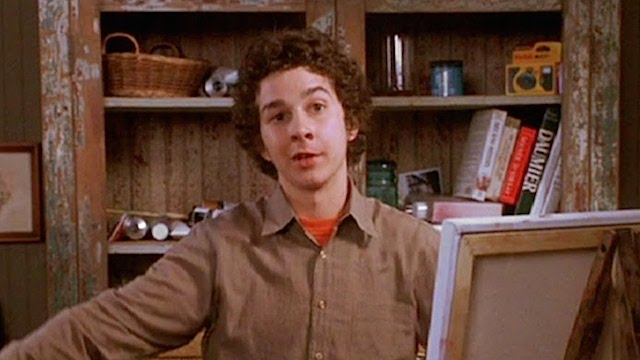 Is this a film you would’ve gone to see?
Is this a film you would’ve gone to see?
But that was about to change with the announcement of a new Project Greenlight series on HBO. Matt and Ben had ten more years in the business. They’re smarter now. Savvier. This time when they found the next great undiscovered screenwriter, they were going to do so with a script that had a chance. Whether that be with his own script or working on an idea they came up with, the point was they were going to make screenwriting boss again.
And then I heard the news. They wouldn’t be looking for screenwriters at all. The contest was limited to directors. I couldn’t believe it. Matt and Ben had just given a big “F U” to the screenwriting community. What they were essentially saying was, “We don’t think screenwriting matters that much anymore. This is a director’s medium.”
I guess the writing was on the wall. Recently, when Damon was promoting his film, Elysium, and was asked about screenwriting, he confided that he makes his decisions these days based only on the director. That’s the lone criteria he follows when making his decision. It wasn’t clear if he even reads scripts for potential projects anymore.
The irony was thick. The two guys who were here because of screenwriting had completely turned their backs on screenwriting. But why? What’s the harm in trying to find a great writer? There’s no doubt organizing and reading 10,000 scripts is a lot harder than looking through thousands of 3 minute videos on the internet. But are you really going to let that stop you?
The reason new talent keeps breaking into Hollywood is because the old guard get fat and lazy. The things they used to do at the beginning – whether it be driving to 50 auditions a week or reading 5 scripts a day – they don’t do that anymore because it’s easier to sit on your leather couch and wait for the studio to call you with their latest offer. Gone is all that hustle that used to define you. And guess what? There’s a hungry kid out there who’s doing all those same things you used to do. And because he’s willing to do the hard work, sooner or later, he’s going to catch up to you. So I really hope this didn’t just come down to work.
But the alternative may be worse. By two men who were defined by their screenwriting prowess ignoring screenwriting in their new contest, are they admitting, in whatever indirect way, that writing for the big screen is dead? Are they saying that screenwriting doesn’t matter anymore?
With studio slates getting so slim they’re starting to resemble runway models, is the system now so small that only the same big-hitters are hired for all the films in town? And because fewer specs are needed, does that nullify the need for new writing talent coming in? And if that’s the case, why bother? Is that what Matt and Ben are saying?
They shouldn’t be saying that. Because here’s what’s going to happen. As TV writing options get better and better, and more and more good writers flee to that medium, Hollywood studios are going to find themselves smack dab in the middle of a writing talent deficit. Shit, it’s already happening. Box office is down 15 percent from last year. And I know this town. I know they’re going to blame it on everything but the writing. What they don’t realize, though, is that the more you marginalize the writer, and the smaller you make that pool of people writing your films, the more of the same you’re going to get. And audiences will always tire of the same at some point.
The one true breakout hit this summer was Guardians of the Galaxy. Something that truly felt different. And it was originally adapted by a girl who had one tiny low-ranking script on the Black List. They could have more of that if they took more chances and put more emphasis on the writing. But they’re not. Outside of Marvel – which is really only taking chances because they’re on the most notorious win streak in Hollywood history and have bajillions of dollars in their coffers – everyone’s playing it safe, not realizing that the audiences have caught up with the con. They know there’s nothing new around the corner.
How does this tie in with Matt and Ben? By only looking for directors, they’re promoting more of the same. They’re basically saying, “Who cares about the script as long as the movie looks good.”
Have you watched any short movies lately? Even the best ones, the ones that end up on best-of-the-year lists, have terrible writing. None of these directors know the first thing about characters or plotting. And I’m not saying they should. Their job is to become the best director they can be. But by only putting the emphasis on these guys and not the script, Matt and Ben have admitted that they’ve either given up on screenwriters or they don’t want to go through the hassle required to find new ones.
And I think these guys owe it to the screenwriting community to go through the hassle. They’ve learned so much from the original experiment. You now know that the script needs a marketable edge and some real money in order to stand out from a production value point of view. I don’t know if it’s too late to start the process or what, but if it is, I hope these two realize their mistake and find another way to give screenwriters a chance. It’d be nice to find the writer of the next Good Will Hunting before he hangs it up due to a lack of opportunities.
I recently read a script from a beginner scribe that wasn’t very good. The key problem was the plot, which was too simplistic and predictable. This simplicity bled into the scene-writing, which was also too predictable. Everything had an “obvious” quality to it, like the writer hadn’t considered any other possibilities. Frustrated, I shared the experience with Miss Scriptshadow, and we got to talking about it.
We came to an agreement that the reason the plot was so simplistic was because the writer wasn’t being discerning. He wasn’t thinking about what he was writing. He was just writing. This is both the blessing and the curse of being a beginner. A blessing because having no filter means total and utter euphoria when you write. Everything feels wonderful because you never have to think beyond your first inclination. And if it feels that good, then the writing must be good, right?
It isn’t until you’ve written a few scripts that you realize there are choices involved in writing – that it’s okay to stop and think about what you’re going to do before you do it. Because the curse side of never considering options is that your script reads option-less. The plot is either simply boring or simply messy, but it’s always simple.
Here’s the crazy thing though. I was reading another script later in the week – a professional script – and I was encountering the same problem. Not as frequently as with the beginning writer, but it was happening every fifth scene or so. I realized that it’s not just beginners who are guilty of this. The best writers in the world do it as well. It’s a slightly different variation of the practice, but it’s essentially the same thing. I call it: “Predisposed Writing.”
Predisposed Writing is when you go into a situation – usually a scene – knowing what you’re going to write beforehand. This may seem like a good thing. If you already know what you’re going to write, then it must be a good scene! What other explanation could there be for being so certain about something?
But if you already know what you’re going to write, chances are the reader’s going to know what you’re going to write as well. That means you’re writing a scene that they’ve already imagined. And if that happens, you’re boring them. Readers (and audience members) can be sympathetic to this for a scene or two. But if it keeps happening, boredom sets in, and they officially check out.
I’m not saying that your first inclination for a scene is always wrong. It may actually be brilliant. But you owe to yourself to STOP before you write a scene and think about other options. Chances are, there’s something better in the cupboard.
Let’s try to look at this visually. I want you to pretend that you’re an interior designer and imagine you’ve just walked into an empty room, a room which you’ll be designing.
A bad (or beginning) interior designer is going to go into this room with a predisposed point-of-view. They know what a basic room looks like. So that’s what they’re going to give the client. A TV near the corner by the cable outlet. We’ll throw the couch back against the wall. Maybe a vase by the TV to make it look nicer. A lamp or two. In your head, you’re imagining this is going to look pretty killer. Then, when you put it together, you get something like this…
Now you’re looking at this room and probably saying, “Oh my GOD. I would kill myself if I had to live in that space!” Well folks, you’re looking at the visual equivalent of 90% of the scenes I read in amateur screenplays. They’re that dull, that lifeless, that devoid of creativity, and it boils down to writers being too set in their ways.
A good interior designer’s first step is to let their initial inclinations wash over them. Not ignore them. They may still use them. But first they want to explore some not-so-obvious choices. Maybe a nontraditional couch as the centerpiece. A cowhide rug instead of a boring hardwood floor. How does the light come in from the windows? Is there any way to arrange the room to accentuate that? With this approach, you’re more likely to get something like this…
Notice how much more thought was put into this room. Notice how they went with a hardwood floor AND a rug. Look at how the rug is shaped. Look at how funky the couch is. Look at the unique shelves placed on the wall. The other designer didn’t even put shelves on the wall. This room is infinitely nicer than the one above.
Now I can already hear some of you crying foul. “That’s cheating, Carson. The second room has a floor-to-ceiling window and costs a hundred times as much to furnish.” I admit that the analogy breaks down a little in that sense, but not really. With writing, the only currency is time. You have no budgetary considerations. If you take the time to challenge yourself and flesh out your ideas, you can create windows with the most beautiful views in the world. You can put a 20,000 dollar couch in your room. You can change the walls to brick. An imagination is infinite, and when you predispose your writing, you prevent yourself from mining all those possibilities.
Predisposed Writing is not just a scene thing. Writers come in with predisposed characters. They come in with predisposed relationships. They come in with predisposed concepts. The thing to remember with writing, especially screenwriting, is that nothing is set in stone. You can have an idea for something, but once you’re tasked with putting that “something” down on paper, it’s your job to challenge it. Your mind, more or less, has been trained by society to think and act like other minds. Which means most of what you come up with is the same kind of stuff other people come up with. Going against your predisposition, then, is the only surefire way to provide a unique experience for the audience.
Let’s apply this practice to an actual scene, shall we? Let’s say we’re going to write one of the more common scenes in screenwriting, a cop arresting someone, let’s say a drug dealer. Now you’re probably already imagining how this scene is going to play out, right?
My predisposed version has a sketchy dealer on a street corner in a bad neighborhood, dealing dope to some loser. Our officers pull up their car, pop out. The Dealer ushers the buyer away, turns to our officers as they’re approaching, an innocent smile at the ready. Looks like this isn’t the first time they’ve met. There’ll be some funny “we’ve been through this before” banter between the three. But the Dealer senses that something’s off, that they might actually arrest him this time. He decides to make a run for it. They chase him down. Catch him. Scene over.
Hmm, how many times have we seen that before? It might as well be in the Predisposed Hall of Fame. So let’s see what happens when we spend some time considering other options. Again, there’s no law that says you have to write these options into your script. All you’re doing is considering them.
A dope dealer in a bad neighborhood is cliché, right? So what if we made our dealer a… grand piano salesman who deals dope on the side? Our cops have evidence he’s dealing so they go to the piano store to arrest him. Inside, a child prodigy is loudly playing Beethoven’s 9th on a nearby piano. Our cops attempt to ask the salesman a few questions (or read him his Miranda Rights), but the annoying prodigy is playing louder and louder (secretly cued by the salesman?), resulting in a lot of “I’m sorry, I can’t hear yous.” In a moment of distraction, the salesman slams the piano flap down on one of the cop’s hands and makes a run for it. The prodigy breaks into some chase music.
This may or may not be the best scene ever. I’d certainly want to take it through a few more drafts, but it’s more inventive and less cliché than the previous scene.
Now obviously I’m writing with free rein here. Within the context of your story, your dealer may have to be on the street. That’s fine. Then you simply ask what other ways you can make the scene different. Maybe the dealer only speaks Spanish, creating a translation problem. Maybe the dealer’s the brother of one of the cops, complicating the arrest. The options are limitless, but they’re only there if you search for them.
In closing, all I ask is that you not get wrapped up in any predisposed notions when you write. Always consider other possibilities. I promise you that if you perfect this practice, you’ll become a much better screenwriter.
Genre: Drama
Premise: Follows a group of characters, with the focus on a writer trying to finish his latest novel in the midst of a complicated affair.
About: This is Paul Haggis’s latest writing-directing effort. Haggis’s film, Crash, won the Best Picture Oscar in 2004. Haggis has gone back and forth between big projects and personal projects since. His personal projects haven’t really broken out, but his big projects have done just fine (Million Dollar Baby, Casino Royale, Quantum of Solace). Haggis was known even before Crash as one of the better writers in town, so his scripts are almost always good reads. Third Person comes out this month (June 20th) and has a stellar cast that includes James Franco, Mila Kunis, Olivia Wilde, Liam Neeson, Maria Bello and Adrien Brody. It should be noted that this is an older draft and that Haggis has probably worked on it since.
Writer: Paul Haggis
Details: 121 pages – May 24, 2011 draft
Man, just a week after I told everyone to beware of The Wall of Text, I see it on the FIRST PAGE of Third Person! BUT before all of you go hollering at me (“See Carson! There are no rules!”) we should note that Haggis is also the director of this script, and therefore the rules don’t apply. Without having to get his script past readers, he doesn’t need to keep their attention the same way you, the unknown do.
It was rather strange to see though, as the last couple of Haggis scripts I read were quite sparse. Maybe this was an early draft where Haggis was still exploring things and therefore unafraid to ramble? I don’t know. But after you get past the opening Text Wall, things start moving along a lot faster, and Third Person becomes one of the better scripts I’ve read this year.
I have a new gauge for determining screenplay quality: How many times I check the internet while reading! With Third Person, I only checked TWICE! For the average Amateur script, I probably check it at least 30 times. Maybe I’ll add the “internet check gauge” at the end of every review now. We’ll see.
Third Person follows a group of seemingly random characters. There’s 50-something Michael, a married writer who’s rented out a hotel room in London to finish his latest novel. There’s 20-something Anna, an aspiring writer who’s having an affair with Michael. She’s flown to London so Michael can read her latest short story (which she hopes to get published), with ‘fooling around’ also on the docket.
There’s 40-something Sean, a middle-income married businessman in Italy. He meets a beautiful but troubled local, Monica, who’s in desperate need of money to buy her daughter back from some bad men.
Finally, there’s Julia, an extremely attractive woman who’s had a huge fall from grace. Once married with a son, she went crazy and almost tried to kill him. She risks never seeing her son again if she can’t convince a court-appointed therapist that she’s sane.
The main story is Michael and Anna. Despite it being the most boring plot on paper, the relationship between the two is captivating. Both of these characters have trouble loving, and they push and pull at each other in such a depraved manner that you’re constantly wondering what the hell’s going to happen to them. Both characters have power over the other (him, his job, her, her sexuality) and use that power at every turn.
The Sean storyline is a weird one. Sean meets this Monica girl at a bar in Italy. She “accidentally” leaves her bag there. He finds her to return it, which is when he learns she’s trying to save her daughter and needs money to do it. Sean’s not sure if he’s being conned, but he gets the money for her anyway because he wants to believe in her, because he wants to believe in a just world. What happens next are a thousand twists and turns as we, like Sean, wonder if this woman is legit or not.
Julia’s story is the least interesting, as we’re not given enough information up front to understand why this therapist meeting is so important to her. Therefore, everything leading up to that appointment is fairly boring, as her scenes are relegated to cleaning hotel rooms at the hotel she just started working at.
I’d give Third Person an “impressive” through the first 100 pages. Michael and Anna’s relationship in particular was a blast to read. Not only was there the unpredictability of the relationship itself, but both characters were putting important writing works into the world, and the suspense of how those works were going to be received (Michael, by his publisher, and Anna, by Michael) kept me engaged. True, my love of writing played a part in that, but even without it, this was one of the better relationships I’ve read on the page in awhile. The only way I can describe it is pure… ENERGY.
Indeed, the unpredictability of those two bled into the rest of the script. Haggis is so far ahead of you as you try to predict where this will go, that after awhile you shake your head and give in. It’s what every great writer does. With whatever element you’re writing (story, character, scene), figure out what the audience’s expectation is, then use that against them. Haggis does that again and again and again here.
Where Third Person gets weird is in its final act. I don’t know if Haggis was trying to outthink himself or what, but let’s just say it begins with a HUGE F*CKING SHOCK. Something we didn’t see coming at all. I actually had to go back and re-read earlier parts of the script just to confirm that what I read was what I read (I’m sorry I can’t reveal it here – it’s too huge of a spoiler).
Personally, I don’t think Haggis set up that twist well enough for us to buy it. But it’s what happens afterwards that throws us for a loop. As the plotlines start to intersect, either they don’t intersect clearly or I completely missed some earlier setup, because all of a sudden Julia (the child-hurter) is calling Michael’s wife and I had no idea these two even knew each other. It was so out-of-left-field, I started to wonder if Julia and Anna were the same person.
Part of my reasoning was that Michael’s novel was supposedly about characters who didn’t know they were in a book (a throwaway line early on). But that didn’t explain how characters could’ve been the same people.
The thing is, the first 100 pages are so good, you almost forgive this confusion and believe it’s your fault (maybe it was?). And in the end, when I put Third Person down, I immediately wanted to discuss it with someone to figure this stuff out. That’s a good sign. Because I’ve read plenty of confusing scripts where the only thing I wanted to do afterwards was press delete.
The bigger picture here is that Third Person is a dying genre. This is a straight drama where nobody shoots anybody. Kramer vs. Kramer kind of stuff. They don’t make these movies anymore. Hollywood has a new name for them. They call them “execution dependent,” and saying those words in a studio office is the equivalent of telling the executive that you banged his wife last night. In fact, he’d probably be happier if you banged his wife.
Indeed, if these dramas are executed well, they’re awesome. But if they’re not, they can lose 50 million easy. And for what? Maybe 40 million upside? No studio wants to take that chance. They’d rather make a monster/alien movie that, whether it’s executed well or not, they can slap together a snazzy trailer for and get people to show up.
There are a few people left making these movies and Paul Haggis is one of them. Thank God for that because we need variety in the marketplace.
[ ] what the hell did I just read?
[ ] wasn’t for me
[xx] worth the read
[ ] impressive
[ ] genius
Number of times I checked Internet during read: 2 times
What I learned: If you’re writing a straight drama (no cops or spies), you have to make the audience talk afterwards. That’s the only way you have a shot. You don’t have explosions or special effects to bring people in the traditional way. So you need word of mouth. Haggis does that two ways here. First, there’s that huge shocking twist on page 100 that I can’t spoil (sorry!). And second, the last 20 pages are open to interpretation, which should get people trading ideas afterwards. In other words, when you’re writing these, think about movies like “The Crying Game.”
Genre: Non-Fiction Book
Premise: A group of Wall Street underdogs begin to realize that the current computer-driven stock market is rigged, and decide to do something to change it.
About: Everyone in town takes notice when Scott Rudin options something, because Scott Rudin wins Oscars. He’s the guy who headed up The Social Network, after all. So when he snatched up Michael Lewis’s best-selling non-fiction book, Flash Boys, the book immediately hit everyone’s radar. You probably know Lewis best for writing the book Moneyball, which, of course, eventually became the movie starring Brad Pitt. You can find Flash Boys here (and as long as you’re over at Amazon, you should pick up my book too. It’s only $4.99!).
Writer: Michael Lewis
Details: 289 pages (published March 31, 2014)
We’re going to do something a little different today. Once that glorious moment comes when you break into Hollywood (through a spec sale or just by writing a great script), your ability to stay in the club will depend on your ability to land assignments. You’ll have to read books like Flash Boys, then come in and pitch your take to producers.
You’ll be up against lots of other writers, so your pitch is going to have to be good. And when I say, “pitch,” I don’t mean your showmanship ability. That’s important, of course. But what’s more important is your take. How do you plan to tell the story?
Because the reality is, a lot of things you’ll need to pitch won’t be obvious stories. They won’t have that perfect narrative spine of a main character going after something and encountering obstacles along the way. In those cases, you’ll need to find a spine. Or decide if you even want a spine. Maybe you want to try something different? The Social Network, the way it bounced back and forth between the deposition and genesis of Facebook, wasn’t a straight-forward treatment of a story at all.
Take Flash Boys. While the characters eventually do come up with a goal, it isn’t until much later. At first, this book is all about numbers and equations and stocks and how stock exchanges work and individual stories of how this rag-tag team of men came together to fight the power. Then, it’s almost like Lewis realized, “Oh yeah, I have to bring this all together,” and came up with something for the group to do.
Flash Boys actually starts with the most fascinating story in the book. A man is secretly building a fiber optic line between Chicago and New Jersey (where the major stock exchanges in the country are located). But this isn’t any ordinary line. He needs it to be straight. Like perfectly straight.
You see, in recent years, trading stocks has become a game of speed. How much speed? The kind of speed where if you can gain at least 1 millisecond over your competitor, it could be worth hundreds of millions of dollars. How is that even possible? That’s what much of the book is about.
But anyway, what this guy realized, was that the current fiber optic line that travels between New Jersey and Chicago zig-zagged all over the place. He hypothesized, that if he could build a straight line, he could save stock traders up to 7 milliseconds of time, which would allow them a huge advantage over their competition.
So his plan was to build this secret line, then go to all the biggest banks and mutual funds and traders, and basically hold them hostage. He’d tell them that if they didn’t get on this line, their competition was going to smash them. Everyone would have to join, and he’d be able to set the price. What would that price be? 10 million each. And guess what? They all signed up.
If there’s a hero in this story, it’s probably Brad Katsuyama. Brad worked for the biggest bank in all of Canada, but when his bank opened a branch in New York, which he’d eventually move to, he realized that nobody gave a shit. On Wall Street, the biggest bank in Canada was the equivalent of a hot dog stand outside of Mcdonalds.
Brad’s new branch meant the company needed a new trading operating system, one that could compete with the heavy hitters on Wall Street. But while Brad expected this new system to make his work easier, it actually did anything but.
Brad realized that whenever he made a trade on this new system, everything in the market would immediately change. Prices in that stock would shoot up or shoot down instantaneously, making it impossible to track the market on any sort of consistent level. In short, every time Brad would make a trade, chaos would ensue.
And he learned he wasn’t alone. When he’d go to other companies, he found that the same thing was happening to them. The crazy thing was, nobody knew why it was happening. Everyone just assumed that because technology was increasing at such a rapid rate, chaos was the collateral damage.
But Brad wasn’t so sure. He thought something fishy was going on. So he went to all the guys at all the top banks and all the top firms, asking them what they thought was going on. But nobody had a clue. What confused Brad is that nobody was that concerned about it either. Something nefarious was clearly going on inside the biggest financial machine in the world, and everyone either didn’t care or didn’t want to spend the time trying to figure it out.
Finally, Brad figured it out. The problem was High Frequency Traders. Now the book gets REALLY specific about what these guys do, which is super complicated, but I’ll try to simplify. Basically, these lone shark dudes figured out a way to see when one of these huge banks or companies was making a trade, then would zip in and buy or sell in order to profit off of it. They could make millions a day doing this. And every time they took that money, it meant the banks and hedge funds were losing it. And whose money do the banks and hedge funds use? YOUR money. So these guys were stealing from YOU.
How did they do it? SPEED. A bank may buy tens of thousands of shares of stock in one go. That takes time. And by time I mean seconds. But if a high frequency trader (HFT) has access to one of those connections that can make a trade in 7 milliseconds, they can buy and sell stocks before your order has even finished going through.
This is why speed became such an important commodity on Wall Street. Whoever had the fastest connection, even if it was by just .1 millisecond, they could undercut you. So HFT were willing to pay millions for those milliseconds.
Awhile back, you’d hear stories about how traders would have their routers set up in the building right next to the Exchange that made all the trades. This allowed them to make their trades the fastest. Savvy entrepreneurs figured this out, would buy up these adjacent buildings and sell router space INSIDE the rooms in the buildings.
But even that wasn’t enough after awhile. Traders would start paying money to get preferred placement INSIDE the room. They wanted their routers to be right next to the wall, so they were closest to the trading building across the street. Even if it was just .1 microseconds of an advantage, it was an advantage.
The book covers how Brad figured all this out, along with his campaign for trying to explain to Wall Street how badly they were getting screwed. Nobody believed him though because nobody on Wall Street gives you information for free. They erroneously figured he must be trying to scam them. Nobody just tells you how to save money. They use that information to MAKE money. They didn’t realize that Brad was just Canadian.
After his knowledge campaign failed, Brad decided to do something unprecedented. He recruited a bunch of underdogs that Wall Street had spit out, and decided to create a new stock exchange. This exchange would have a built-in algorithm that would make it impossible for high frequency traders to game the system. Everybody who traded through his exchange would be on equal footing.
Of course, creating your own stock exchange was nuts to say the least. Up until a few years ago, there were only a couple (the NYSE and the Nasdaq). Some deregulation practice to increase competition came about after the 2008 finanical meltdown. But getting folks to trade on a new exchange was a whole other animal. Would Brad and his buddies be able to do it? That would become the ultimate question.
Flash Boys is a fascinating book that both flies and stumbles in equal parts. When it’s telling stories about people trying crazy never-before-attempted schemes like creating your own stock exchange or secretly building a straight fiber optic line from New Jersey to Chicago (physically blowing up mountains in the process), it’s at its best.
But when it gets into the specifics of how high frequency traders are undercutting the bigger guys, the information is overwhelming. You have to understand how stocks are traded, the unique kind of orders traders can use (which there are a lot of), how “baiting” works, how using different stock exchanges affects a trade, how orders are put through (some all at once, some in bunches), mutual funds, dark pools. Flash Boys spends a lot of time on that. And at a certain point, it’s impossible to keep up.
Still, I found it fascinating. For example, you might wonder why the SEC hasn’t stopped this. It’s because THEY DON’T UNDERSTAND IT. The top people at all the banks don’t even understand what’s going on. These are people who grew up in a pre-computer-stock-driven world. They don’t understand how a bunch of smart tech geeks could sneak in and take advantage of their system (many of them from Russia, surprisingly).
The question is, how do you adapt this into a movie? There’s a lot of information in this book so there’s a lot of different ways to go. When you adapt something, you’re first looking for the best angle to tell the story from, and from there, you’re looking at all the potential challenges that direction poses and how you’ll address them.
So for example, the most obvious angle to tell the story from is to follow five Wall Street misfits as they try to create their own stock exchange. The question is, where do you start? Do you start with them already together? That allows us to jump right into the story. Or do you start earlier and focus on these guys as they meet each other one by one? Because in the book, Brad’s the one who figures all this out before he hires anyone. And the audience needs that information to understand why they’re doing what they’re doing in the first place. So do you cheat, start with everyone together, and have them learn all this stuff together (instead of Brad doing it alone?) or do you follow Brad first, even though that means it’ll take awhile for the story to get going?
Or do you come in with a weirder more ambitious take? Maybe you pull a Lost-style setup mixed with a little Scorsese. Start with these guys already together, have one of the characters be a narrator, then as they pursue their goal of a stock exchange, one by one jump back in time and tell the origin story of each player. Because each guy’s backstory in the book is pretty interesting (one guy realized he wanted to do this after going to work one day only to watch the two towers fall right before going inside).
Whichever way you choose, you’re going to have challenges. For example, Lewis portrays all these guys as underdog Robin Hoods. Their “thing” is that they could profit off this, but instead try to educate others on it. When nobody listens, they build a stock exchange to save them.
That’s very noble and all, but it seems to me that if you build a successful stock exchange, you’re going to make a lot of money. I mean, these guys aren’t donating all their profits to charity, are they? Lewis conveniently downplays this aspect, but it’s something you’d have to consider when adapting the script. You can’t portray people as Robin Hoods if the end goal is to make a ton of cash. And if that – the most obvious direction for the script – can’t be executed, then what’s the end goal going to be? There’s no obvious substitution, yet there is no script unless you find the answer.
And then there’s all that information you have to convey to the audience. Talking about numbers and teaching people how stocks are traded, for the most part, is boring. Yet it’s essential to understand what Brad’s getting so upset about and what he’s trying to do to change it. A smart producer may even ask you that in your meeting. “How do you plan to convey all this information to the audience in an entertaining way?” And you better have an answer ready.
In the end, this is a really good book. Whether it becomes a really good movie is still up in the air. That could be up to you. In fact, maybe Mr. Rudin is watching right now (I know he’s been to the site). Pitch your best take on how you’d adapt the book. Most upvotes wins!
[ ] what the hell did I just read?
[ ] wasn’t for me
[xx] worth the read
[ ] impressive
[ ] genius
What I learned: When it comes to adapting a book, you very well might pick only a small portion of the book to base the script on. It could total only ¼ of the story. The story that opens Flash Boys, for example, could make a great movie in itself (a guy risks everything by building a high speed fiber optic line between Chicago and New Jersey with no idea if anyone will actually buy into it when he’s finished). All you care about when adapting something is finding the best story within those pages and bringing it to life. What makes a book good often isn’t the same thing that makes a movie good.
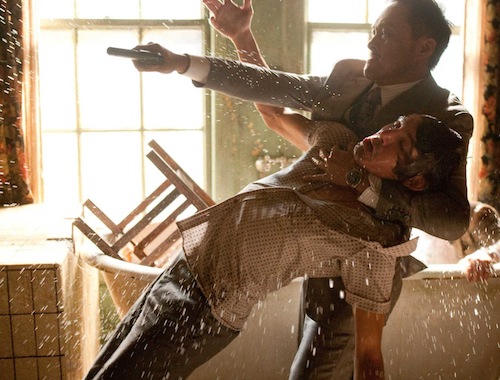 Inception’s first act is pretty awesome.
Inception’s first act is pretty awesome.
It surprises me that people have trouble with the first act because it’s easily the most self-explanatory act there is. Introduce your hero, then your concept, then send your hero out on his/her journey. But I suppose I’m speaking as someone who’s dissected a lot of first acts. And actually, when I really start thinking about it, it does get tricky in places. The most challenging part is probably packing a ton of information into such a small space. So that’s something I’ll be addressing. Also, I’ve decided to include my second and third act articles afterwards so that this can act as a template for your entire script. Hopefully, this gives you something to focus on the next time you bust open Final Draft. Let’s begin!
INTRODUCE YOUR HERO (page 1)
Preferably, the first scene will introduce your hero. This is a very important scene because beyond just introducing your hero, you’re introducing yourself as a writer. A reader will be making quick judgments about you on everything from if you know how to write, if you know how to craft a scene, and what level you’re at as a screenwriter. So of all the scenes in your script, this is the one that you’ll probably want to spend the most time on. It’s also extremely important to DEFINE your hero with this scene. Whatever the biggest strength and/or weakness of your hero, try to construct a scene that shows us that. Finally, try to convey who your hero is THROUGH THEIR ACTIONS (as opposed to telling us). If your hero is afraid to take initiative, give them the option in the scene to take initiative, then show them failing to do so. A great opening scene that shows all of these things is the opening of Raiders of the Lost Ark.
SET UP YOUR HERO’S WORLD (pages 3- 15)
The next few scenes will consist of showing us your hero’s world. This might show him/her at work, with friends, with family, going about their daily life. This is also the section where you set up most of the key characters in the script. In addition to setting up their world, you want to hit on the fact that something’s missing in their life, something the hero might not even be aware of. Maybe they’re missing a companion (Lars and the Real Girl). Maybe they’re putting work over family (George Clooney in Up in the Air). Maybe they’re allowing others to push them around (American Beauty). It’s important NOT TO REPEAT scenes in this section. Keep it between 2-5 scenes because between pages 12-15, you’re going to want to introduce the inciting incident.
INCITING INCIDENT (pages 12-15)
Introducing the inciting incident is just a fancy way of saying, “Introducing a problem that rocks your protagonist’s world.” This problem makes its way into your hero’s life, forcing them to act. Maybe their plane crashes (The Grey), they get someone pregnant (Knocked Up), or their daughter gets kidnapped (Taken). Now your hero is forced to make a decision. Do they act or not? — It should be noted that sometimes the inciting incident will arrive immediately, as in, on the very first page. For example, if a character wakes up with amnesia (Saw, The Bourne Identity) or something traumatic happens in the opening scene (Garden State – his father dies), the hero is encountering their inciting incident (their problem) immediately.
HELL NO, I AIN’T GOIN (aka “Refusal of the Call”) (roughly pages 16-25)
The “Hell No I ain’t goin” section occurs right after the inciting incident and basically amounts to your character saying (you guessed it), “I’m not goin anywhere.” The reason you see this in a lot of scripts is because it’s a very human response. Humans HATE change. They hate facing their fears. The problem that arises from the inciting incident is usually a manifestation of their deepest fear. So of course they’re going to reject it. Neo says no to scaling a building for Morpheus and gives in to the baddies instead. This sequence can last one or several scenes. It’ll show your hero trying to go back to what they know.
OFF TO THE JOURNEY (page 25)
When your character decides to go off on their journey (and hence into the second act), it’s usually because they realize this problem isn’t going away unless they deal with it. So in order to erase this eternal snowfall, Anna from Frozen must go off, find her sister and ask her to end it. This is where the big “G” in “GSU” comes from. As your hero steps into that second act, it begins the pursuit of their goal, which is to solve the problem.
GRAB US IMMEDIATELY
Now that you know the basic structure, there’s a few other things you want to focus on in the first act. The first of those things? Don’t fuck around! Readers are impatient as hell, expecting you to be bad writer (since you’re an amateur) and judging you immediately. So try and lure them in with a kick-ass scene right away and don’t let them off the hook (each successive scene should be equally as page-turning). This doesn’t mean start with an action scene (although you can). It could mean a clever reversal scene or an unexpected twist in the middle of the scene. Pose a mystery. A murder. Show us something that’s impossible (people jumping across roofs – The Matrix). Use your head and just make us want to keep turning the pages even if our fire alarm is going off in the other room. Achieving this tall order WHILE doing all the other shit I listed above (set up your hero and his flaw), is what makes writing so tricky.
MAKE IT MOVE
It’s important that the first act move. Bad writers like to DRILL things into the reader’s head over and over and over again. For example, if they want to show how lonely their hero is, they’ll show like FIVE SCENES of them being lonely. And guess what us readers are doing? We’re already skimming. Typically, a reader picks things up quickly if you display/convey information properly. Show that your hero is bad with women in the first scene, we’ll know they’re bad with women. There are some things you want to repeat in a script (a character’s flaw, for example) but you want to slip that into scenes that are entertaining and necessary for the story, not carve out entire scenes that are ONLY reiterating something we already know. This is one of the BIGGEST tells for an amateur writer, so avoid it at all costs!
ENTERTAIN US WHILE SETTING US UP
You’re setting up a lot of stuff in your first act. You’re setting up your main character’s everyday life, their flaws, the love interest (possibly), secondary characters, the inciting incident, setups for later payoffs. For that reason, a first act can quickly turn into an information dump. That’s fine for a first draft. But as you rewrite, you’ll want to smooth all this information over, hide it even, and focus on ENTERTAINING US. Nobody’s going to pat you on your back for doing everything I’ve listed above. That stuff is EXPECTED. They’re only going to pat you on the back if your first act is entertaining. Think of it like this. Nobody wants to know how a roller coaster works. They just want to ride on it.
EVERY SCRIPT IS UNIQUE
One of the hardest things about writing is that every story presents unique challenges that force you to improvise. Nobody’s going to be able to follow the formula I laid out to a “T.” You’re going to have to adjust, improvise, invent. That shouldn’t be scary. You’re artists. That’s what you do. Just to give you a few examples, Luke Skywalker is not introduced in the beginning of Star Wars. Marty McFly doesn’t choose to go on his adventure. He’s thrust into it unexpectedly (when his car jumps back to the past). Some films, like Crash, have multiple characters that need to be set up. This requires you to set up a dozen little mini-stories (for each character) as opposed to one big one. Some scripts start with a teaser (Jurassic Park) or a preamble (Inception). The point is, don’t pigeonhole yourself into the above unless you have a very straightforward plot (like Taken, Rocky, or Gravity). Otherwise, be adaptable. Understand where your story is resisting structure, and be open to trying something different.
IN SUMMARY
That’s probably the scariest thing about writing, is tackling the unknown. So what do you do if you come upon these unique challenges? What do you do with your first act, for example, if the inciting incident happens right away, as it does in The Bourne Identity? Do you still break into the second act on page 25? Well, I know the answer to that question as well as some other tricky scenarios, but they’d require their own article (short answer – you break into the second act a little earlier, around page 20). What I’ll say is, this is one of the big things that separates the pros from the amateurs. The pro, because he’s written a lot more, has encountered more problematic scenarios and had more experience trying to solve them. The only way to catch up to them is to keep writing a lot (not just one script, but many, since each script creates its own set of challenges) and figure out these answers for yourselves. The good news is, with this article, you have a template to start from. And remember, when all else fails, storytelling boils down to one simple coda: A hero encounters a problem and must find a solution. That’s true for a story. It’s true for individual characters. It’s true for subplots. It’s true for individual scenes. If you follow that layout, you should do fine. And if you want to get into more detail about this stuff, check out my book, which is embarrassingly cheap at just $4.99 on Amazon! ☺
THE SECOND ACT!
Character Development
One of the reasons the first act tends to be easy is because it’s clear what you have to set up. If your movie is about finding the Ark, then you set up who your main character is, what the Ark is, and why he wants to get it. The second act isn’t as clear. I mean sure, you know your hero has to go off in pursuit of his goal, but that can get boring if that’s the ONLY thing he’s doing. Enter character development, which really boils down to one thing: your hero having a flaw and having that flaw get in the way of him achieving his goal. This is actually one of the more enjoyable aspects of writing. Because whatever specific goal you’ve given your protag, you simply give them a flaw that makes achieving that goal really hard. In The Matrix, Neo’s goal is to find out if he’s “The One.” The problem is, he doesn’t believe in himself (his flaw). So there are numerous times throughout the script where that doubt is tested (jumping between buildings, fighting Morpheus, fighting Agent Smith in the subway). Sometimes your character will be victorious against their flaw, more often they’ll fail, but the choices they make and their actions in relation to this flaw are what begin to shape (or “develop”) that character in the reader’s eyes. You can develop your character in other ways (via backstory or everyday choices and actions), but developing them in relation to their flaw is usually the most compelling part for a reader to read.
Relationship Development
This one doesn’t get talked about as much but it’s just as important as character development. In fact, the two often go hand in hand. But it needs its own section because, really, when you get into the second act, it’s about your characters interacting with one another. You can cram all the plot you want into your second act and it won’t work unless we’re invested in your characters, and typically the only way we’re going to be invested in your characters is if there’s something unresolved between them that we want resolved. Take last year’s highest grossing film, The Hunger Games. Katniss has unresolved relationships with both Peeta (are they friends? Are they more?) and Gale (her guy back home – will she ever be able to be with him?). We keep reading/watching through that second act because we want to know what’s going to happen in those relationships. If, by contrast, a relationship has no unknowns, nothing to resolve, why would we care about it? This is why relationship development is so important. Each relationship is like an unresolved mini-story that we want to get to the end of.
Secondary Character Exploration
With your second act being so big, it allows you to spend a little extra time on characters besides your hero. Oftentimes, this is by necessity. A certain character may not even be introduced until the second act, so you have no choice but to explore them there. Take the current film that’s storming the box office right now, Frozen. In it, the love interest, Kristoff, isn’t introduced until Anna has gone off on her journey. Therefore, we need to spend some time getting to know the guy, which includes getting to know what his job is, along with who his friends and family are (the trolls). Much like you’ll explore your primary character’s flaw, you can explore your secondary characters’ flaws as well, just not as extensively, since you don’t want them to overshadow your main character.
Conflict
The second act is nicknamed the “Conflict Act” so this one’s especially important. Essentially, you’re looking to create conflict in as many scenarios as possible. If you’re writing a haunted house script and a character walks into a room, is there a strange noise coming from somewhere in that room that our character must look into? That’s conflict. If you’re writing a war film and your hero wants to go on a mission to save his buddy, but the general tells him he can’t spare any men and won’t help him, that’s conflict. If your hero is trying to win the Hunger Games, are there two-dozen people trying to stop her? That’s conflict. If your hero is trying to get her life back together (Blue Jasmine) does she have to shack up with a sister who she screwed over earlier in life? That’s conflict. Here’s the thing, one of the most boring types of scripts to read are those where everything is REALLY EASY for the protagonist. They just waltz through the second act barely encountering conflict. The second act should be the opposite of that. You should be packing in conflict every chance you get.
Obstacles
Obstacles are a specific form of conflict and one of your best friends in the second act because they’re an easy way to both infuse conflict, as well as change up the story a little. The thing with the second act is that you never want your reader/audience getting too comfortable. If we go along for too long and nothing unexpected happens, we get bored. So you use obstacles to throw off your characters AND your audience. It should also be noted that you can’t create obstacles if your protagonist ISN’T PURSUING A GOAL. How do you place something in the way of your protagonist if they’re not trying to achieve something? You should mix up obstacles. Some should be big, some should be small. The best obstacles throw your protagonists’ plans into disarray and have the audience going, “Oh shit! What are they going to do now???” Star Wars is famous for one of these obstacles. Our heroes’ goal is to get the Death Star plans to Alderaan. But when they get to the planet, it’s been blown up by the Death Star! Talk about an obstacle. NOW WHAT DO THEY DO??
Push-Pull
There should always be some push-pull in your second act. What I mean by that is your characters should be both MAKING THINGS HAPPEN (push) and HAVING THINGS HAPPEN TO THEM (pull). If you only go one way or the other, your story starts to feel predictable. Which is a recipe for boredom. Readers love it when they’re unsure about what’s going to happen, so you use push-pull to keep them off-balance. Take the example I just used above. Han, Luke and Obi-Wan have gotten to Alderaan only to find that the planet’s been blown up. Now at this point in the movie, there’s been a lot of push. Our characters have been actively trying to get these Death Star plans to Alderaan. To have yet another “push” (“Hey, let’s go to this nearby moon I know of and regroup”) would continue the “push” and feel monotnous. So instead, the screenplay pulls, in this case LITERALLY, as the Death Star pulls them in. Now, instead of making their own way (“pushing”), something is happening TO them (“pull”). Another way to look at it is, sometimes your characters should be acting on the story, and sometimes your story should be acting on the characters. Use the push-pull method to keep the reader off-balance.
Escalation Nation
The second act is where you escalate the story. This should be simple if you follow the Scriptshadow method of writing (GSU). Escalation simply means “upping the stakes.” And you should be doing that every 15 pages or so. We should be getting the feeling that your main character is getting into this situation SO DEEP that it’s becoming harder and harder to get out, and that more and more is on the line if he doesn’t figure things out. If you don’t escalate, your entire second act will feel flat. Let me give you an example. In Back to the Future, Marty gets stuck in the past. That’s a good place to put a character. We’re wondering how the hell he’s going to get out of this predicament and back to the present. But if that’s ALL he needs to do for 60 pages, we’re going to get bored. The escalation comes when he finds out that he’s accidentally made his mom fall in love with him instead of his dad. Therefore, it’s not only about getting back to the present, it’s about getting his parents to fall in love again so he’ll exist! That’s escalation. Preferably, you’ll escalate the plot throughout the 2nd act, anywhere from 2-4 times.
Twist n’ Surprise
Finally, you have to use your second act to surprise your reader. 60 pages is a long time for a reader not to be shocked, caught off guard, or surprised. I personally love an unexpected plot point or character reveal. To use Frozen, again, as an example, (spoiler) we find out around the midpoint that Hans (the prince that Anna falls in love with initially) is actually a bad guy. What you must always remember is that screenwriting is a dance of expectation. The reader is constantly believing the script is going to go this way (typically the way all the scripts he reads go). Your job is to keep a barometer on that and take the script another way. Twists and surprises are your primary weapons against expectation, so you’ll definitely want to use them in your second act.
IN SUMMARY
In summary, the second act is hard. But if you have a structural road-map for your story (you know where your characters are going and what they’re going after), then these tools should fill in the rest. Hope they were helpful and good luck implementing them in your latest script. May you be the next giant Hollywood spec sale! :)
THE THIRD ACT!
THE GOAL
Without question, your third act is going to be a billion times easier to write if your main character is pursuing a goal, preferably since the beginning of the film. “John McClane must save his wife from terrorists” makes for a much easier-to-write ending than “John McClane tries to figure out his life” because we, the writer, know exactly how to construct the finale. John McClane is either going to save his wife or he’s going to fail to save his wife. Either way, we have an ending. What’s the ending for “John McClane tries to figure out his life?” It’s hard to know because that scenario is so open-ended. The less clear your main character’s objective (goal) is in the story, the harder it will be to write a third act. Because how do you resolve something if it’s unclear what your hero is trying to resolve?
THE LOWEST POINT
To write a third act, you have to know where your main character is when he goes into the act. While this isn’t a hard and fast rule, typically, putting your hero at his lowest point at the end of act two is a great place to segue into the third act. In other words, it should appear at this point in the story that your main character has FAILED AT HIS/HER GOAL (Once Sandra Bullock gets to the Chinese module in GRAVITY, that’s it. Air is running out. She doesn’t understand the system. There are no other options). Either that, or something really devastating should shake your hero (i.e. his best friend and mentor dies – Obi-Wan in Star Wars). The point is, it should feel like things are really really down. When you do this, the audience responds with, “Oh no! But this can’t be. I don’t want our hero to give up. They have to keep trying. Keep trying, hero!” Which is exactly where you want them!
REGROUP
The beginning of the third act (anywhere from 1-4 scenes) becomes the “Regroup” phase. This phase often has to deal with your hero’s flaw, which is why it works so well in comedies or romantic comedies, where flaws are so dominant . If your hero is selfish, he might reflect on all the people he was selfish to, apologize, and move forward. But if this is an action film, it might simply mean talking through the terrible “lowest point” thing that just happened (Luke discussing the death of Obi-Wan with Han) and then getting back to it. Your hero was just at the lowest point in his/her life. Obviously, he needs a couple of scenes to regroup.
THE PLAN
Assuming we’re still talking about a hero with a goal, now that they’ve regrouped, they tend to have that “realization” where they’re going to give this goal one last shot. This, of course, necessitates a plan. We see this in romantic comedies all the time, where the main character plans some elaborate surprise for the girl, or figures out a way to crash the big party or big wedding. In action films, it’s a little more technical. The character has to come up with a plan to save the girl, or take down the villain, or both. In The Matrix, Neo needs to save Morpheus. He tells Trinity the plan, they go outfit themselves with guns from the Matrix White-Verse, and they go in there to get Morpheus.
THE CLIMAX SCENE
This should be the most important scene in your entire script. It’s where the hero takes on the bad guy or tries to get the girl back. You should try and make this scene big and original. Give us a take on it that we’ve never seen in movies before. Will that be hard? Of course. But if you’re rehashing your CLIMAX SCENE of all scenes?? The biggest and most important scene in the entire screenplay? You might as well give up screenwriting right now. If there is any scene you need to challenge yourself on, that you need to ask, “Is this the best I can possibly do for this scene?” and honestly answer yes? This is that scene!
THE LOWER THAN LOWEST POINT
During the climax scene, there should be one last moment where it looks like your hero has failed, that the villain has defeated him (or the girl says no to him). Let’s be real. What you’re really doing here is you’re fucking with your audience. You’re making them go, “Nooooooo! But I thought they were going to get together!” This is a GOOD THING. You want to fuck with your audience in the final act. Make them think their hero has failed. I mean, Neo actually DIES in the final battle in The Matrix. He dies! So yeah, you can go really low with this “true lowest point.” If the final battle or confrontational or “get-the-girl” moment is too easy for our hero, we’ll be bored. We want to see him have to work for it. That’s what makes it so rewarding when he finally succeeds!
FLAWS
Remember that in addition to all this external stuff that’s going on in the third act (getting the girl, killing the bad guy, stopping the asteroid from hitting earth), your protagonist should be dealing with something on an internal level as well. A character battling their biggest flaw on the biggest stage is usually what pulls audiences and readers in on an emotional level, so it’s highly advisable that you do this. Of course, this means establishing the flaw all the way back in Act 1. If you’ve done that, then try to tie the big external goal into your character’s internal flaw. So Neo’s flaw is that he doesn’t believe in himself. The only way he’ll be able to defeat the villain, then, is to achieve this belief. Sandra Bullock’s flaw in Gravity is that she doesn’t have the true will to live ever since her daughter died. She must find that will in the Chinese shuttle module if she’s going to survive. If you do this really well, you can have your main character overcome his flaw, but fail at his objective, and still leave the audience happy (Rocky).
PAYOFFS
Remember that the third act should be Payoff Haven. You should set up a half a dozen things ahead of time that should all get some payin’ off here in the finale. The best payoffs are wrapped into that final climactic scene. I mean who doesn’t sh*t their pants when Warden Norton (Shawshank spoiler) takes down that poster from the wall in Andy Dufresne’s cell? But really, the entire third act should be about payoffs, since almost by definition, your first two acts are setups.
OBSTACLES AND CONFLICT
A mistake a lot of beginner writers make is they make the third act too easy for their heroes. The third act should be LOADED with obstacles and conflict, things getting in the way of your hero achieving his/her goal. Maybe they get caught (Raiders), maybe they die (The Matrix), maybe the shuttle module sinks when it finally gets back to earth and your heroine is in danger of drowning (Gravity). The closer you get to the climax, the thicker you should lay on the obstacles, and then when the climactic scene comes, make it REALLY REALLY hard on them. Make them have to earn it!
NON-TRADITIONAL THIRD ACTS (CHARACTER PIECES)
So what happens if you don’t have that clear goal for your third act? Chances are, you’re writing a character piece. While this could probably benefit from an entire article of its own, basically, character pieces still have goals that must be met, they’re just either unknown to the hero or relationship-related. Character pieces are first and foremost about characters overcoming their flaws. So if your hero is selfish, your final act should be built around a high-stakes scenario where that flaw will be challenged. Also, character piece third acts are about resolving relationship issues. If two characters have a complicated past stemming from some problem they both haven’t been able to get over, the final act should have them face this issue once and for all. Often times, these two areas will overlap. In other words, maybe the issue these two characters have always had is that he’s always put his own needs over the needs of the family. The final climactic scene then, has him deciding whether to go off to some huge opportunity or stay here and takes care of the family. The scenario then resolves the character flaw and the relationship problem in one fell swoop! (note: Preferably, you are doing this in goal-oriented movies as well)
IN SUMMARY
While that’s certainly not everything, it’s most of what you need to know. But I admit, while all of this stuff is fun to talk about in a vacuum, it becomes a lot trickier when you’re trying to apply it to your own screenplay. That’s because, as I stated at the beginning, each script is unique. Indiana Jones is tied up for the big climax of Raiders. That’s such a weird third act choice. In Back To The Future, George McFly’s flaw is way more important than our hero, Marty McFly’s, flaw. When is the “lowest point before the third act” in Star Wars? Is it when they’re in the Trash Compactor about to be turned into Star Wars peanut butter? Or is at after they escape the Death Star? I think that’s debatable. John McClane never formulates a plan to take on Hanz in the climax. He just ends up there. The point is, when you get into your third act, you have to be flexible. Use the above as a guide, but don’t follow it exactly. A lot of times, what makes a third act memorable is its imperfections, because it’s its imperfections that make it unpredictable. If you have any third act tips of your own, please leave them in the comments section. Wouldn’t mind learning a few more things about this challenging act myself!

